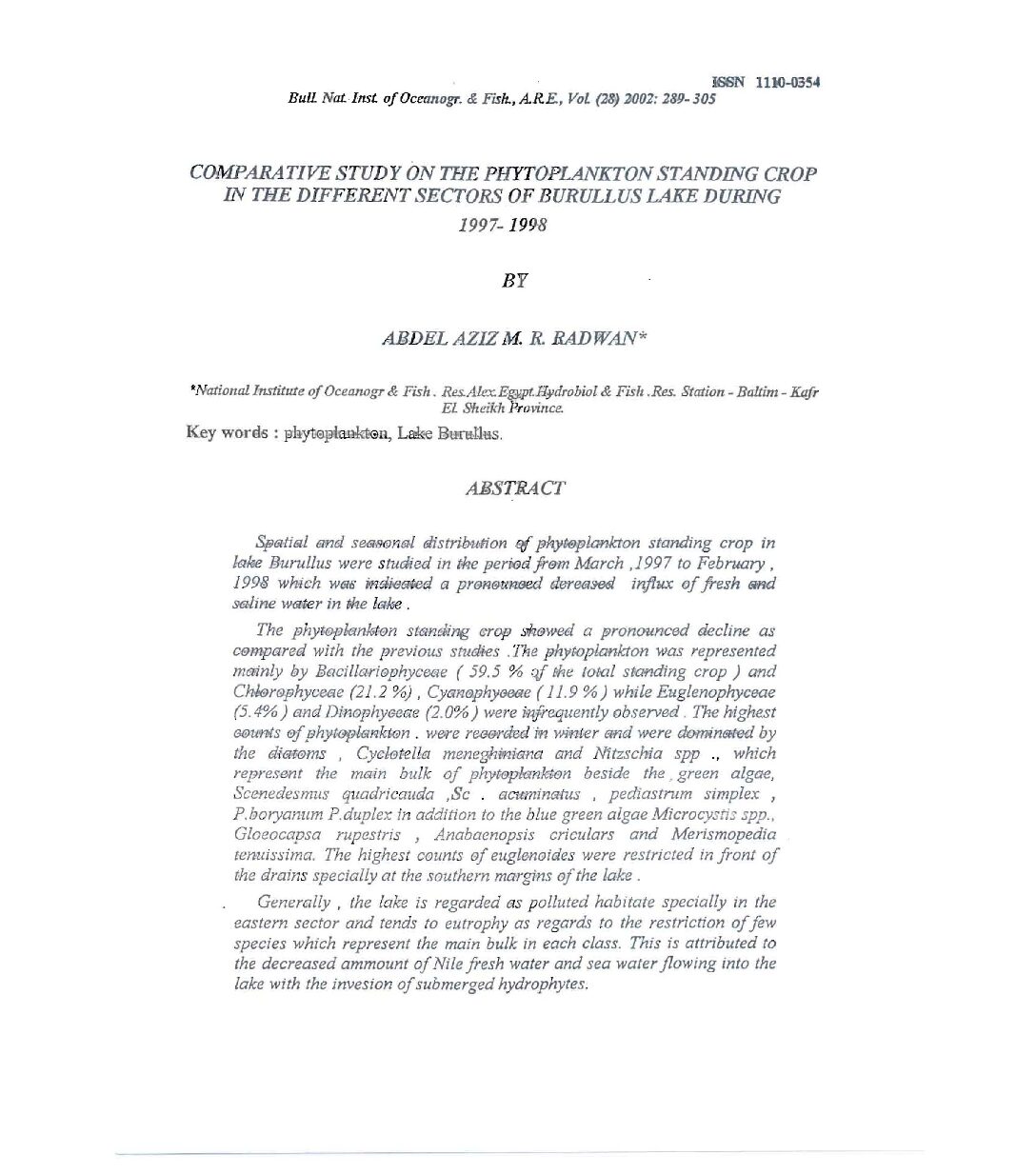Categories
vol-28LEACHABLE AND RESIDUAL PR, N1 AND CD IN mE SEDIMENTS OF
ABU-QIR BA~ ALEXANDRIA, EGYPT
BY
WAFIKA M. ABOUL-NAGA*, MOHAMEDA. ElSA YEDAND
ESAM M. DEGHEDY
-NationallnstituJe ojOceanography and FISheries, Alexandria, Egypt
ABSTRACT
The partitioning of Pb, Ni and Cd between dilute acid leachable and
residual (all other modes of association) fractions was studied in the
sediments ofthe Bay ofAbu-Qir, west ofAlexandria.
Total metal concentrations ranged between 23.7. and 125.9 J-lg g,l
(average 65.5 ± 21.1 J-lg g.l) for lead, 27. 7 to 162.9 J-lg g,l (average 91.0 ±
35.5 fig g”l) for nickel and 1.58 to 7.20 (average 4.86 ❗ 1.28 J-lg g’l) for
cadmium, highest concentrations were measured in the vicinity ofpoints
recognized as potential sources pollution. Concentrations in the leachable
fraction were relatively low and averages for Pb, Ni and Cd were 2.3, 32.0
and 0.10 fig g.l respectively. Taking the leachabLe fraction as a relative
measure ofthe degree ofmObility it appeared that Ni was the most mobile
as it had between 26 and 49% of its total concentration present in the
leachable form. More than 97% of Pb and Cd are present in forms not
available for the dilute acid leaching and are, therefore, less mobile.
Variations of the residual concentrations of Pb and Ni appeared as
mostly related to the mud and organic matter content which means that
this fraction is tightly held in the crystallaffice and/or pre~ent as sulphide
and organic complexes. Organic matter and mud contents explain most of
the variability ofthe leachalJle Pb, which agrees with the high adsorption
capacity ofthe fine fraction. Only the leachable Hi wasfound to be related.
to the carbonate content, which explains the relative higher mObility ofthis
element.







